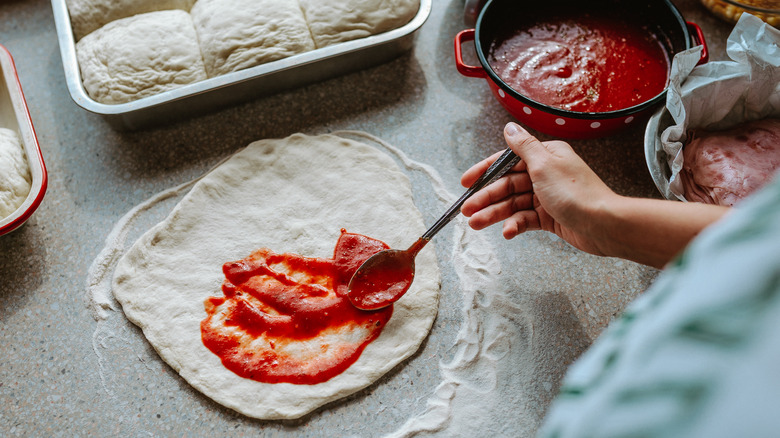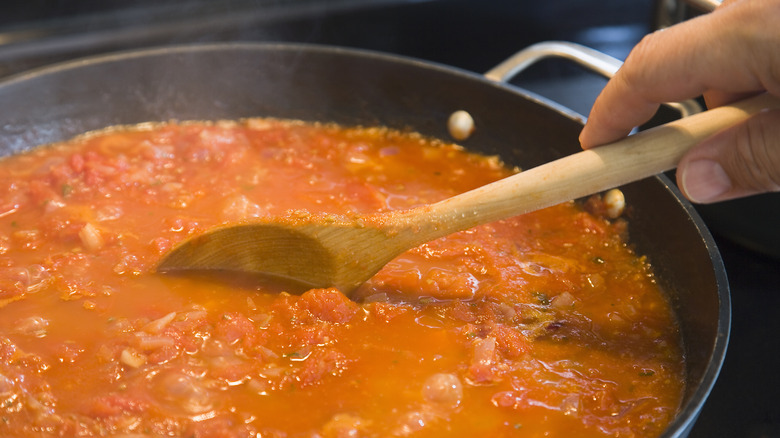Reducing Your Tomatoes Is The Key To Elevating Homemade Pizza Sauce
Getting the sauce right is the key to achieving an excellent pizza. It can't be too thin and watery, or the crust will be soggy. It should be a thicker sauce, but not so thick that it is not easy to spread evenly. The flavors too — the tomatoes, herbs, and spices — all need to be on point for the sauce to work. And the way to achieve all of these is by reducing your tomatoes.
While reduction may be more synonymous with something like a wine sauce, it is nevertheless a cooking method that serves a variety of different sauces equally well. Essentially, reduction occurs when the water present in the sauce begins to evaporate, thereby creating a thicker, more concentrated sauce. With tomato sauce specifically, too much water can lead to muted flavors and a runny consistency. Canned tomatoes also contain citric acid in order to help with preservation. So reducing will actually increase the acidity, which can be balanced with a little sugar. Reduction also elevates the more savory notes of the tomatoes and spices.
A reduced tomato sauce is a very easy thing to accomplish. However, its success depends upon two things: patience and vigilance. Tomato sauces take a fair amount of time to reduce, and the heat needs to be monitored closely.
How to reduce tomato sauce
Reducing tomato sauce is a simple matter of simmering the sauce for a long time on top of the stove. Whole, canned tomatoes emulsified with an immersion blender are most recommended when making sauce from scratch. To begin your sauce, add the tomatoes and whatever other herbs, spices, and aromatics you like. Over medium-high heat, bring the sauce up to a low boil.
Now, once the sauce is bubbling, turn the heat down to low, and allow the tomato sauce to simmer for at least an hour — or up to six if you're making a big batch — stirring occasionally to check consistency. As the water leaves the sauce during this time, the sauce begins to thicken and the flavors become stronger as there is little water left to mask them.
Monitor the heat of your stove while the sauce is simmering. If the heat becomes too high, the sauce could develop a burnt, more caramelized flavor, which is not desirable. The sauce is meant to be the base upon which all of the other ingredients rest. It should therefore be present, but not overpowering. The reduced sauce should be thicker, not watery, and easy to spread over the pizza dough.
So if you've got the patience and don't mind watching the sauce channel for an hour or more, reducing your tomatoes is a surefire way to make your next pizza amazing.

